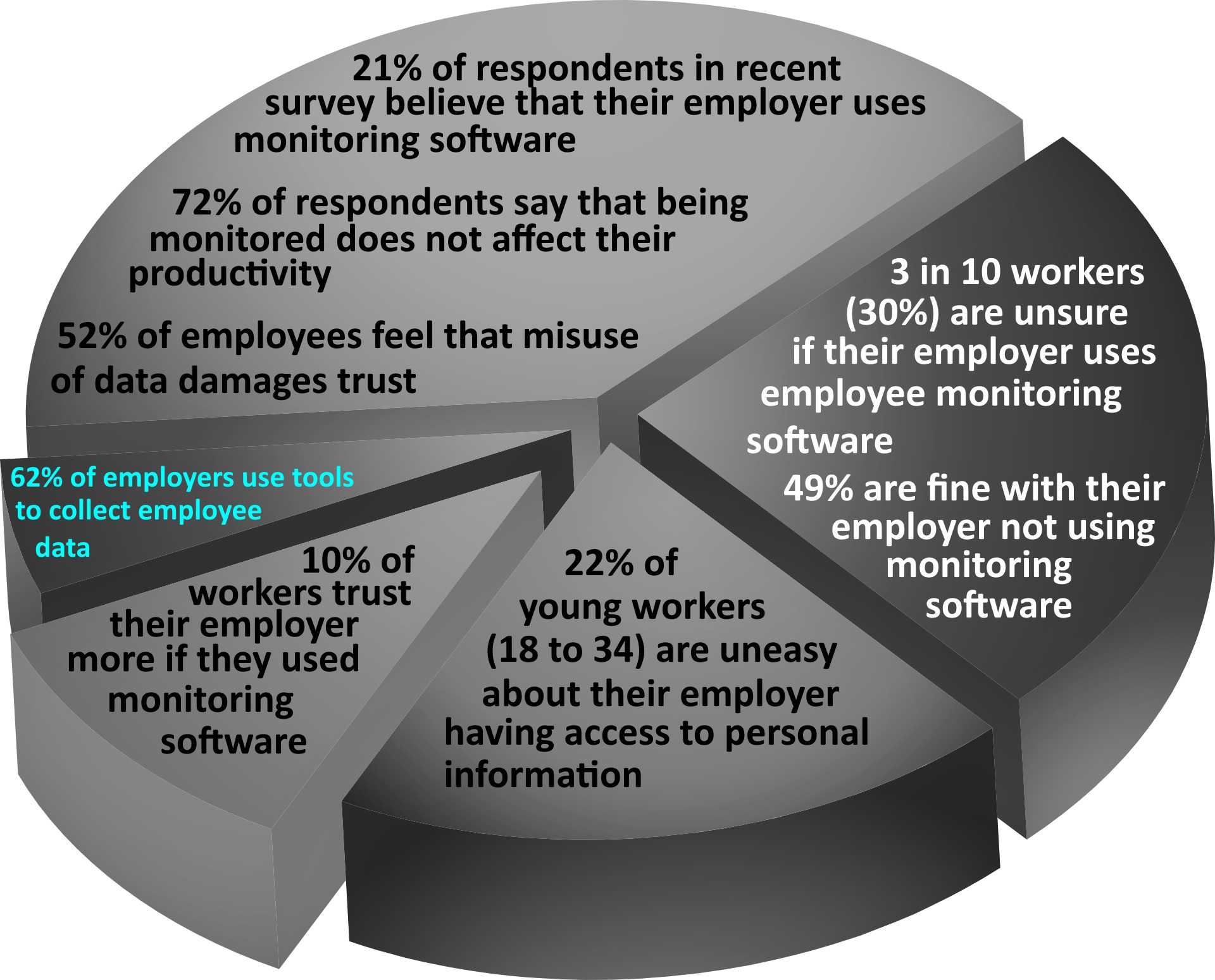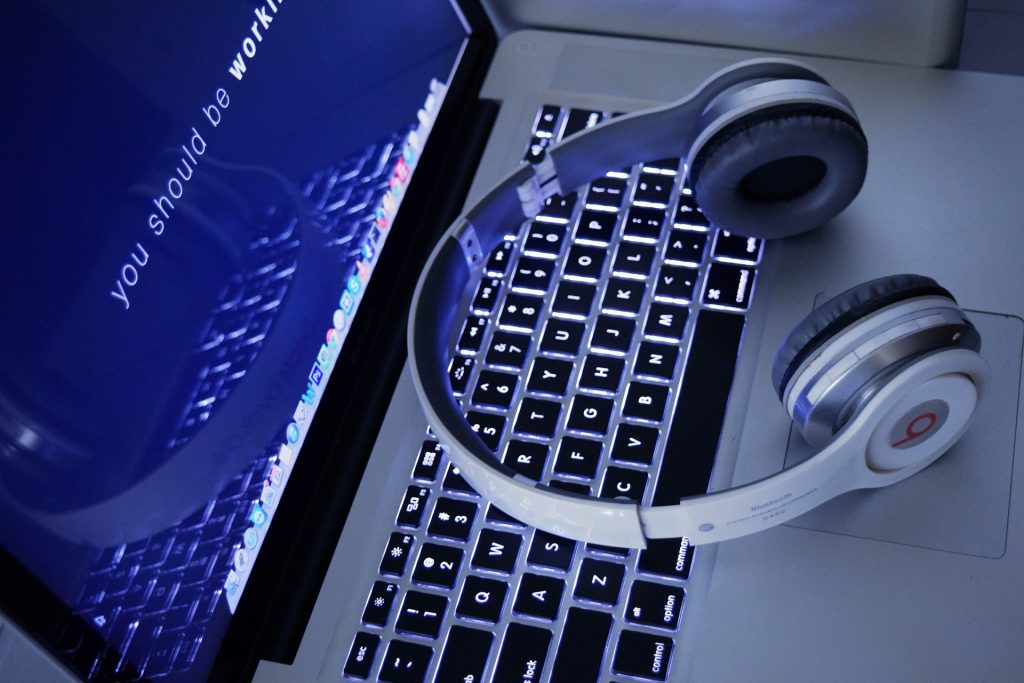Monitoring employees’ workflow is important to a company’s success. Fortunately, today’s technology combined with infallible traditional methods makes the process easy and efficient.
Table of Contents
Is Monitoring Employees Really Necessary?
Let’s start with the controversial aspects of employee surveillance. As a direct consequence of the current global state of affairs, monitoring employees has become mandatory as more people are working from home. As a result, and by default, the use of monitoring technology has led to controversial privacy questions, and rightly so.
Companies feel they have no other choice but to ask or demand that employees comply with what many workers view as ‘intrusive technology.’ And with cancel culture on the rise, who knows what could lead to a suspension from work because of an innocent typo.
According to a recent survey, roughly 65% of employees feel uneasy about their every keystroke being monitored while on the job. It’s like, okay, but who’s going to monitor the employers? Can companies be trusted? Do they discern the difference between observing a remote worker’s productivity and outright eerie surveillance? Things can get, well, creepy.
Companies want to make certain that employees are actually on the job and not sipping a latte while checking their Twitter feed, and that’s understandable. But some employers take it a bit too far.
Take for instance Whole Foods, owned by the mega corporation Amazon. The company has incorporated a synergistic heat-mapping-tool to track where workers might be unionizing.
However, being as it may, by nature, human beings tend to ‘slack off’ when no one’s watching. In fact, many employers revealed that work hours dropped after staff began working remotely. Employees were late in responding to messages and customer service became nearly non-existent. In order to remedy the situation, employer’s turned to monitoring software, and it practically saved their business.
By and large, most employers want to be fair and are unlikely to go as far as Whole Foods. The unfairness mainly comes into view when employers use surveillance to track employees not only when they’re working, but off the job as well.
Three Key Points
- Employees should assume that as long as they are using a company device, anything they do on that particular device will be monitored.
- Business owners and managers have probably already figured out that employees will feel uneasy about being monitored. Therefore, it’s essential to be straightforward about how surveillance coincides with company goals.
- Companies must protect any information gathered from monitoring employees whether it’s their personal browsing history or data stored on a company computer.
The extent of the legality of using monitoring software depends on the company and their employees’ location, and probably a few connections too. For instance, in some regions, like the EU, employees must consent to being monitored.
In the United States, there is no federal law requiring businesses to inform workers that they are being monitored.
Employee Monitoring Software Benefits
Besides the benefit of observing staff employees productivity, monitoring software has other benefits as well:
- Utilizing monitoring software gives employers the opportunity to asses employee’s performance and quantify their output.
- Guaranteed transparency for better communication with remote team members.
- Employers can manage employee activity; thereby, enhancing company prospects. Mistakes are caught early, rectified, allowing work to continue without much delay.
- Location is not an issue as modern technology is capable of monitoring staff anywhere in the world.
- Companies can pinpoint staff members’ capabilities better helping them to delegate tasks to the right worker with the correct skillset.
- Payroll efficiency is improved as work hours are automatically recorded resulting in less pay discrepancies.
- In total, monitoring tools increase employee productivity and company revenue as administration is more efficient and transparency is a given.
- Surveillance software keeps workers in unison, preventing correspondence issues and fraud.
According to Statistics:

Roughly 50% of large corporations were monitoring employees emails and social media accounts prior to the pandemic.
What’s more, monitoring tools helps remote teams boost productivity by purging bottlenecks. A high number of workers, nearly 70%, can reduce the capacity of an entire team due to inactivity waiting for another colleague’s data.
Additional data used in the above chart is available on Hubstaff, Smallbiztrends, and other leading telecommuting survey sites.
One Last Hurrah for Old Times Sake
For companies that still manage an in-office staff, one of the most effective ways to monitor them is first hand; in the flesh. No, it doesn’t mean standing over a worker annoyingly waiting for the right moment to pounce.
Nor would it be wise to install a surveillance camera in the upper corner of the company break room. The fact of the matter is that discreetly observing an employee interacting with a client for several minutes, will clue you in on their performance capabilities faster and more accurately than any customer feedback survey.
Though the shift to remote work has been tremendous, don’t dismiss in-person observation. In fact, arrange in-person meetings with remote employees on ocassion if possible. If not, a one-on-one online face time chat will suffice.
7 Ways to Monitor Employee Performance
- Timely
This monitoring app provides a simple interface and a favorite of SMBs. It’s ideal for freelancers working with companies on long-term projects as it allows tracking per-project. Timely also features cloud based appointment scheduling.
- Hubstaff
Hubstaff is a straightforward application for remote monitoring employees and downloadable on desktop computers and mobile devices. The app includes screenshots for work verification, URL tracking, time tracking, and more.
- Teramind
An award-winning employee monitoring software, Teramind is one of the best in the industry. Features include email and website monitoring, file transfer tracking keystroke logger, and incorporates user-behavior-analytics (UBA/UEBA)
An employee management software, Staffcop is designed with unique features that responds to internal threats by assessing risky and destructive behaviors. Additional features include recording of chat and instant messaging correspondence.
- HiveDesk
A great employee tracking app for SMBs, HiveDesk features random screen sampling, straightforward time sheets, project expenditure and multi-level access management, and extras.
- InterGuard
InterGuard is a cost effective cloud-based software. Features include insider threat detection, time tracking and attendance, website blocking, filtering, to name a few.
- AtivTrak
Designed as a cloud-based SaaS application, ActivTrak processes employee activity and provides video playback. Additional features include recording real-time user activity, exposing workflow bottlenecks, and analyzing productivity activity.
Choose Wisely
Keep in mind that monitoring software will increase the demands on company and employee computers. Costs will increase as well. Therefore, as far as possible, select the employee monitoring software that actually meets the need of the company exclusive of unnecessary features.
Conclusion
Employee monitoring is critical in handling data and validating productivity. Nonetheless, without employee participation, no business can run effectively. Monitoring personnel should be viewed as an ethical matter and not as a mere operational necessity.
If workers feel that they are constantly under the watchful eye of big-brother and must ask permission for every move, they will eventually become unproductive and dissatisfied with their job.
A balance must be struck between a company’s objectives and how they expect employees to contribute to achieving them.
If an employer has efficient, high-performing, optimistic, employees, does it really matter if they check their Twitter feed or answer a personal email on occasion? If workers are viewed as mere automatons, the instantaneous spirit of creativity, trust, and devotion required to propel a company to success will be lost.






Comments are closed for this post.